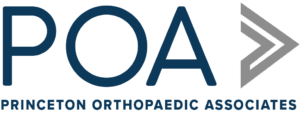
Book An Appointment
Physician Assistants
Physical & Occupational Therapists
KneeMRI ScansNon-OperativePhysiatry
Physical Therapy
Podiatry
Spine
Sports Medicine
TraumaUrgent Care
X-Ray Imaging

Torticollis (from the Latin term "torticulus," meaning "twisted neck") is a persistent head tilt to one side with a corresponding twist to the opposite side. It's sometimes termed "wry neck" in adults with torticollis. In infants, congenital muscular torticollis is the most prevalent form. Torticollis is a rare but serious congenital disability in which the infant's head twists excessively. It's the third most prevalent genetic abnormality after hip dislocation and clubfoot.
An infant's most obvious sign of torticollis is a continual head tilt to one side, with the chin pointed toward the shoulder on the other side. If you discover any of the following, you should see a pediatrician, orthopedist or physical therapist:
The causes of torticollis are unknown, but studies point to various factors, including muscular, skeletal, neurological, and visual problems. Congenital muscular torticollis is the most common type. It is characterized by a shortening of the sternocleidomastoid muscle (SCM), which bends and turns the neck. Theories for the cause of congenital torticollis include a crowded position in the womb and decreased blood supply or trauma to the SCM. Acquired torticollis can be induced by an infant being overexposed to his/her head turned in one direction after birth.
A pediatrician or orthopedic surgeon can generally tell based on the child's examination, but an ultrasound or X-ray may be required. Congenital muscular torticollis affects newborns and infants. The infant will have a persistent head tilt to the affected side with the chin rotated toward the other shoulder. The baby's preference to look to one side and the flattening of the back of the infant's head are both clinical signs.



The first months of a youngster's life are crucial for their growth. An infant's development of eyesight, sensory processing, feeding, and fine and gross motor skills might be harmed by torticollis.
Examples may include:
If you think your child may have this condition, it is important to seek treatment as early as possible. Early intervention can help to avoid potential developmental delay and facial asymmetry.
The most frequent therapy options are manual and occupational therapy, although surgery may be required in certain resistant circumstances.
Passive and active range of motion exercises, active strengthening, and a positioning program are all used in torticollis's typical physical therapy treatment.
Conservative treatment of children with physical therapy has an excellent success rate, ranging from 90% to 99%. Parents contribute to their baby's therapy by participating in a home exercise program that includes neck stretches, playful activities that encourage symmetrical development, and specialized sitting while pushing a stroller. Your baby needs to spend at least 15 minutes in tummy time four times a day.
If your baby's congenital muscular torticollis does not respond to a regular physical therapy program, surgery may be required to correct the problem. The pediatric orthopedist will lengthen the tight muscle using general anesthesia. Following surgery, physical therapy will resume.
